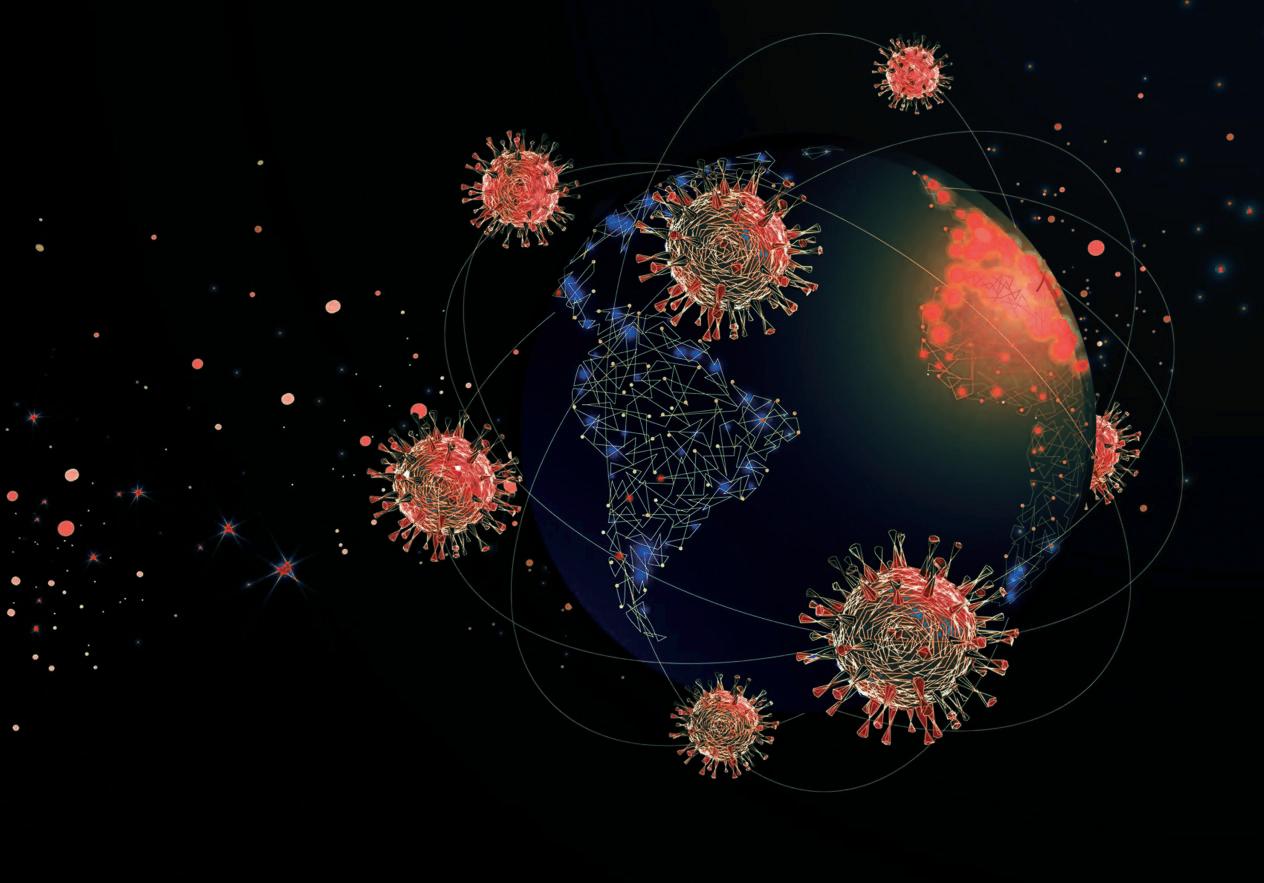
4 minute read
THE TIME OF THE DOOMSDAY PREACHERS AND HOPE
BY OVIDIU CONSTANTINESCU, FACE PR AND NEWS
This is the time of the doomsday preachers, the moment when all those who predicted and preached the end of the world (as we know it) could stand proud in the middle of any empty square in any empty city and shout to the empty world “I’ve told you so!”
Advertisement
This is the time when The Evil One sacrificed the lust for grandeur at the altar of efficiency, opting – in his battle with the Good - for a minuscule yet deadly virus rather than a magnificent and brilliant war. So far, the THING is doing its job with an infectious competence: almost two billion people around the world confined at home, in selfimposed house arrest, a quarter of a million people infected (as we write), 5% in serious condition, and 30,000 killed during the first three months of the confrontation. But what makes the fight against Covid-19 different from similar situations in history is that DEATH on medical grounds has become somehow unacceptable, and we are valuing LIFE of the individual more than ever before.
Until now the Covid-19 pandemic looks pathetic in comparison with previous ones: (165 AD) the Plague of Galen – five million people dead; (541 -542 AD) Plague of Justinian – 25 million people dead; (1346-1353 AD) the Black Death – anything from 75 to 200 million people; (1889-1890 AD) the “Russian” Flu – one million dead; (1918 – 1920) the Spanish Influenza –500 million people infected, up to 50 million dead, (1956-1958) the Asian Flu – two million people dead; the HIV/AIDS pandemic - 25 million people dead (and still counting, with no vaccine in sight).
Yet, as pathetic as may it seem. in terms of the number of deaths, the Covid-19 pandemic has managed to literally shut down the world and bring the economy to a standstill in less than two months. No war ever has managed to do this. The THING has turned the economic world upside down and inside out: we are encouraged to stay at home, to work from home and away from the traditional “working place”, to keep “social distance” against our natural instinct and so on. Some are even paid to stay at home and not turn up to work.
The tiny THING that has killed over 30,000 people has shown how much we depend on each other as individuals and as nations. We are in it together, we live on the same planet, no matter what country or town we come from. The traditional borders are no longer there even if politicians are clinging on them in a desperate attempt to hold on a certainty that in reality does not exist. The true meaning of the sentence that when we wake up from this nightmare “the world will no longer be the same” is this: we are one. We may not have the faintest idea of what the world will look like at the end of the Covid19 pandemic, but for certain we will prevail. There will be losses, there will costs and it will be hard, but we will prevail.
The bad news is that economy will take some time to get started and we are not talking months, but years. Many years. There are entire business sectors that have been affected: transportation (the aviation industry is all but flattened, with 70% fewer flights than in December 2019, ground operation providers have followed suit); the hospitality industry (hotels converted into quarantine centers and food outlets that cater for them do not really count); retail is gone; OVIDIU CONSTANTINESCU

leisure, entertainment and sports have disappeared literally overnight together with restaurants, pubs and clubs; the automotive industry has closed down, with millions of workers around the world sent home; agriculture is hit by a lack of workforce (and drought in Romania, in particular); the energy sector is hit by a 70% drop in demand (no more production, no more electricity needed); the oil industry is in disarray, due to a nose-dive in demand, while the oversupply resulting from the confrontation between the Saudis and Russia has pushed the oil price down to the $20-a-barrel threshold (and some insiders even contemplate a doom scenario of an unthinkable $5-a-barrel, as dosens of large tankers, filled with no-more-needed A1 jet fuel, are sailing the high seas as floating storage reservoirs). Given its current state this huge machine will not start at first turn of the key, but it will need the help of the hand crank and a lot of effort. There is, however, some good news too. First, the younger generation has no problem working together, regardless of the physical distance that separates individuals. After frequent run-ins with their parents about spending long hours playing games online, they now seem at ease with e–classes all around the globe (“I’ve told you, dad, that one day it may be useful”). Elearning is not just a fancy word and the ability to find educational resources may be the hottest thing in the CV of a person that is looking for a bright career in education. Second, employers around the world have started to realize the value of “working from home”, which until now was another word for calling in a sickie. By a twist of fate, the massive contamination and subsequent death of first-line doctors will push hard towards research on digital healthcare and the deployment of robots and AI during the next pandemic.
To end on a positive note, there is hope at the end of the tunnel, no matter how long that is.


